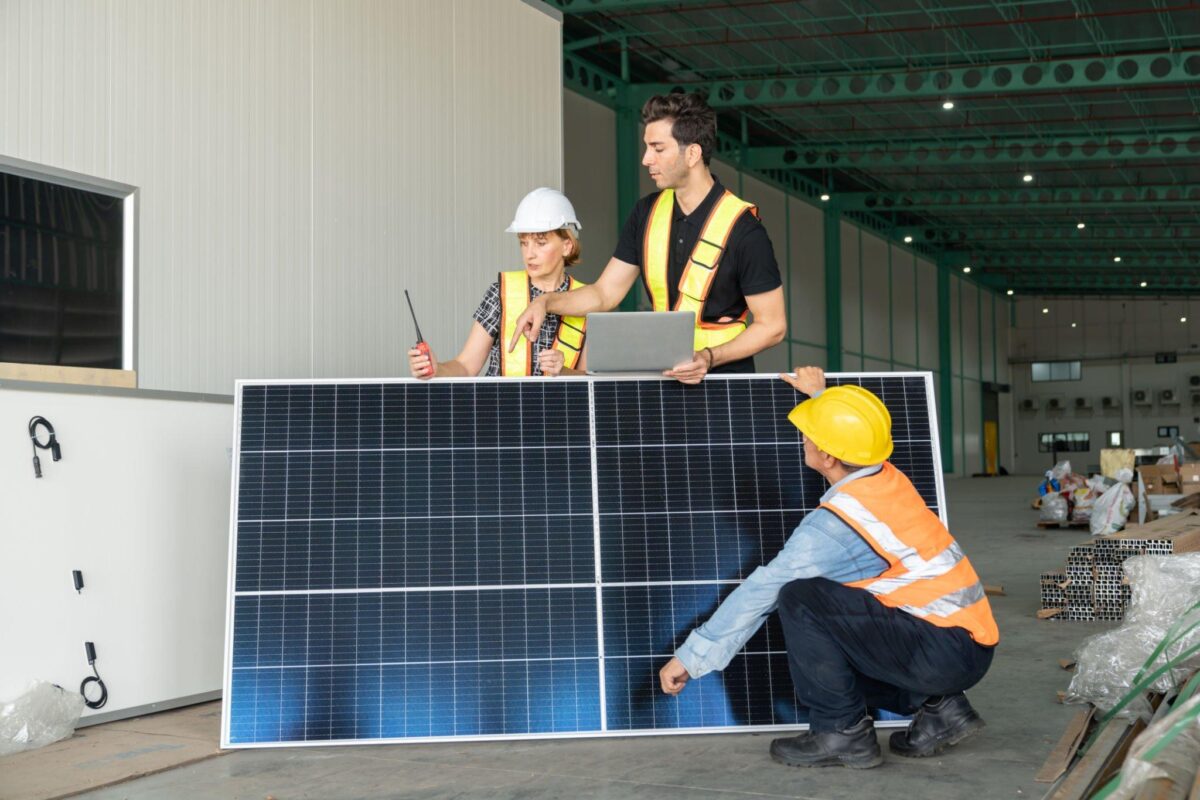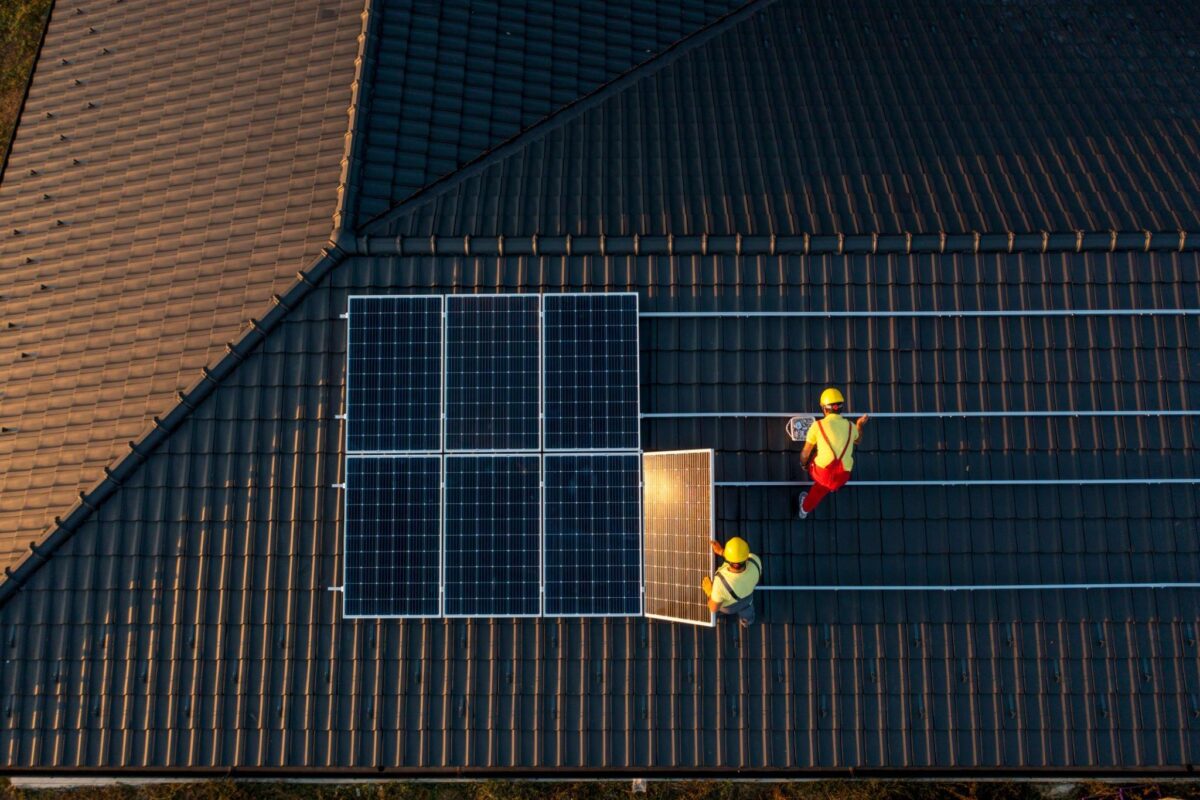To get the most out of your solar system, you need to understand how to size a solar system to meet your energy usage patterns. Follow these steps to learn how to estimate size, calculate solar needs, and choose the right panel to get the most out of your solar installation.

What Is the Solar System?
Solar energy system is a renewable energy system, which is composed of solar panels, inverters, solar cell energy storage systems, brackets and other accessories, the entire system is connected to the power grid of the home or business through wires and cables, using PV modules to convert solar energy into usable electricity.
Solar photovoltaic systems provide users with a reliable, clean source of energy for a variety of different fields and uses, such as residential, industrial and commercial, agricultural, community government projects, remote areas and islands, and emergency backup power.
Major System Components
The specific solar system is a selection of different components based on system type, site location and application. But its main components are very different, which include solar panels, inverters, battery energy storage systems, brackets, wire connectors, monitoring systems, distribution boxes and loads (equipment).
- Solar panels: Solar panels are the core components of the solar system, converting sunlight into direct current electricity through the photovoltaic effect.
- Inverters: Inverters convert the direct current generated by solar panels into alternating current for use in a home or business.
- Battery energy storage systems: Optional battery energy storage systems are used to store excess solar power for emergency use, such as at night or when the weather is rainy.
- Bracket: The bracket is used to install the solar panel, ensuring that it can be correctly positioned and fixed in the sun to maximize sunlight absorption.
- Wires and connectors: Wires and connectors are used to connect solar panels, inverters and battery energy storage systems together to form a complete solar system.
- Monitoring system: The monitoring system is used to monitor the performance and output of the solar system to help users understand the working condition of the system and make necessary maintenance and adjustments.
- Power distribution boxes: Power distribution boxes are used to securely distribute solar power to the grid of a home or business, ensuring the safe and efficient operation of the system.
- Load (equipment) : Electrical appliances connected to a solar photovoltaic system, such as lights, radio, television, computers, refrigerators, etc.
How to Size A Solar System
Estimating of Your Energy Usage
Calculate Your Daily kWh Usage
To determine your KWH usage from your electricity bill, it is best to look at 12 months of usage to be able to view usage peaks and valleys over a period of more than a year. Air conditioning may be used in summer and winter, which will make your energy consumption peak.
Calculate your 12-month KWH total, divide it by 12 to get your average monthly consumption, and divide it by 30 to get your average daily KWH usage.
Look Up Your Peak Sun Hours
To determine your energy output, you need to know the peak solar hours where you live, with average solar hours varying widely depending on your location and local climate.
Find the highest sunshine hours by looking up the sunshine map for your area to determine the number of hours per day when sunlight produces its peak. Typically, in areas farther south and with lower humidity, the hours of peak sunshine will be longer than in northern or humid areas, and the peak sunshine also varies with the time of year and more specific location data.
Determine Solar Panel Efficiency
The structure and quality of the photovoltaic panel can result in the output power of the solar panel ranging from 110 watts to 400 watts. This information is usually listed in the technical parameters of the solar panel, which you can find on the manufacturer’s website or in the product manual of the solar panel. Efficiency is expressed as a percentage and is expressed as the ability of a solar panel to convert sunlight energy into electricity.
Calculating the Size of Your Solar System
To calculate the size of your system, first convert your daily usage to watts. Multiply that number by kWh by 1,000 to come up with the total number of watts needed to generate electricity per day. For example, if your electricity consumption is 30 kWh per day, you need to generate 30,000 watt-hours per day.
Next, divide the watt-hours by the number of peak sunshine hours. This calculation will give you the total wattage required to be generated by your solar system. If you need to generate 30,000 watt-hours and have 6 hours of peak sunshine, your system needs to generate 5,000 watts per day.
Finally, divide it by the wattage of each panel in the system. For a 5,000-watt requirement, if your panels produce 250 watts per panel, a total of 20 panels are needed to meet daily output requirements. On the other hand, if the panels produce only 200 watts of power, 25 panels would need to be used to achieve the same result.

Fine-Tuning the Estimated System Design
To make the solar system size estimate as accurate as possible, you’ll also need to consider the average sunlight in your area, the shade around your house, the size and Angle of your roof, or the type of roof installation you need.
Select Your Mount Type
Roof mounting is the simplest and most cost-effective solution as it costs less than other racks.
You can start by finding your address on Google Maps to check if there are viable south-facing roof installation options, and of course, if you live in the Southern Hemisphere, look for north-facing options where your solar system should be pointing towards the equator.
If rooftop installation is not an option, you can also consider ground or pole installation. You can place the solar panels in any direction you want to maximize the reception of sunlight.
Get Your Orientation Right
Adjust the position of your solar panels, making sure to avoid any possible shadows to receive maximum sunlight. As far as possible, it is installed at a certain height from the ground to avoid being blocked by the light reflected from the ground.
Choose the Right Solar Panels
If you have a larger area available, you can buy more and larger panels, but if you have limited area available or partial shading, then using fewer small, efficient panels will be the most cost-effective long-term solution. You can add more panels later to meet the increased energy demand.
Calculate Solar System Output
Once you have determined the above factors, you can calculate the output of your solar system using the following formula:
Solar system output = total fixed power of solar panels × number of solar panels × efficiency of solar panels × sunshine duration
Note that you also need to consider system losses, such as wire losses, inverter efficiency losses, etc. Typically, you can take these losses into account during the planning and design phase of your solar system.
Other Considerations
On average, more efficient solar panels cost more and increasing the efficiency of solar power generation is necessary, but if you have enough space available, it may be wise to choose a larger number of cheaper solar panels.
In addition, if your area charges high electricity prices, it may be wiser to install solar panels on the west side of your roof. They will generate electricity later in the day, offsetting higher TOU rates during peak usage.
Conclusion
Switching to solar energy is a reasonable choice, both economically and environmentally. Before deciding to convert, you should carefully assess your energy needs, including factors such as electricity usage, location, and size of your home.
In partnership with GYCX Solar, GYCX Solar is committed to providing users with a complete set of solar system solutions. Our professional team will tailor the solar solution to suit your needs and site conditions. Our services cover design, installation and maintenance to ensure you can make the most of solar energy and bring clean, sustainable energy solutions to your life and work.

